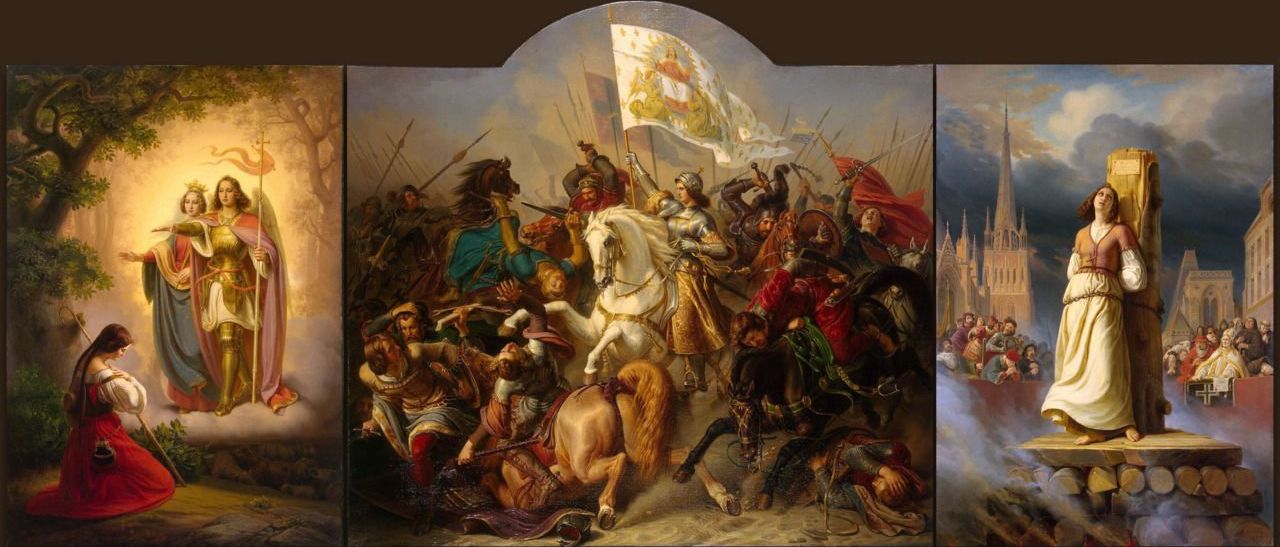Joan of Arc: Maid of Orleans
Posted on 25th April 2021
Joan of Arc is the Patron Saint of France and at times of great danger the nation looks to Joan for their salvation. But how did this simple girl from the provinces who, could neither read nor write and was dead by the age of 19 become so admired and an icon for the ages.
She was born in the village of Domremy in the province of Lorraine in north-eastern France sometime in 1412, and though she was of peasant stock her family were not poor her father being a prosperous farmer and minor village official.
Little is known of Joan’s early childhood, but she seems to have had little if no formal education which may denote an ignorance but no lack of intelligence on her part - Joan had a vivid imagination and a great deal of time in which to indulge it. She would wander the fields near her home for hours at a time all alone and lost in her thoughts. She was to claim that she had been having visions since the age of twelve and that she heard voices so beautiful to her ears that she would weep whenever she could hear them no more.
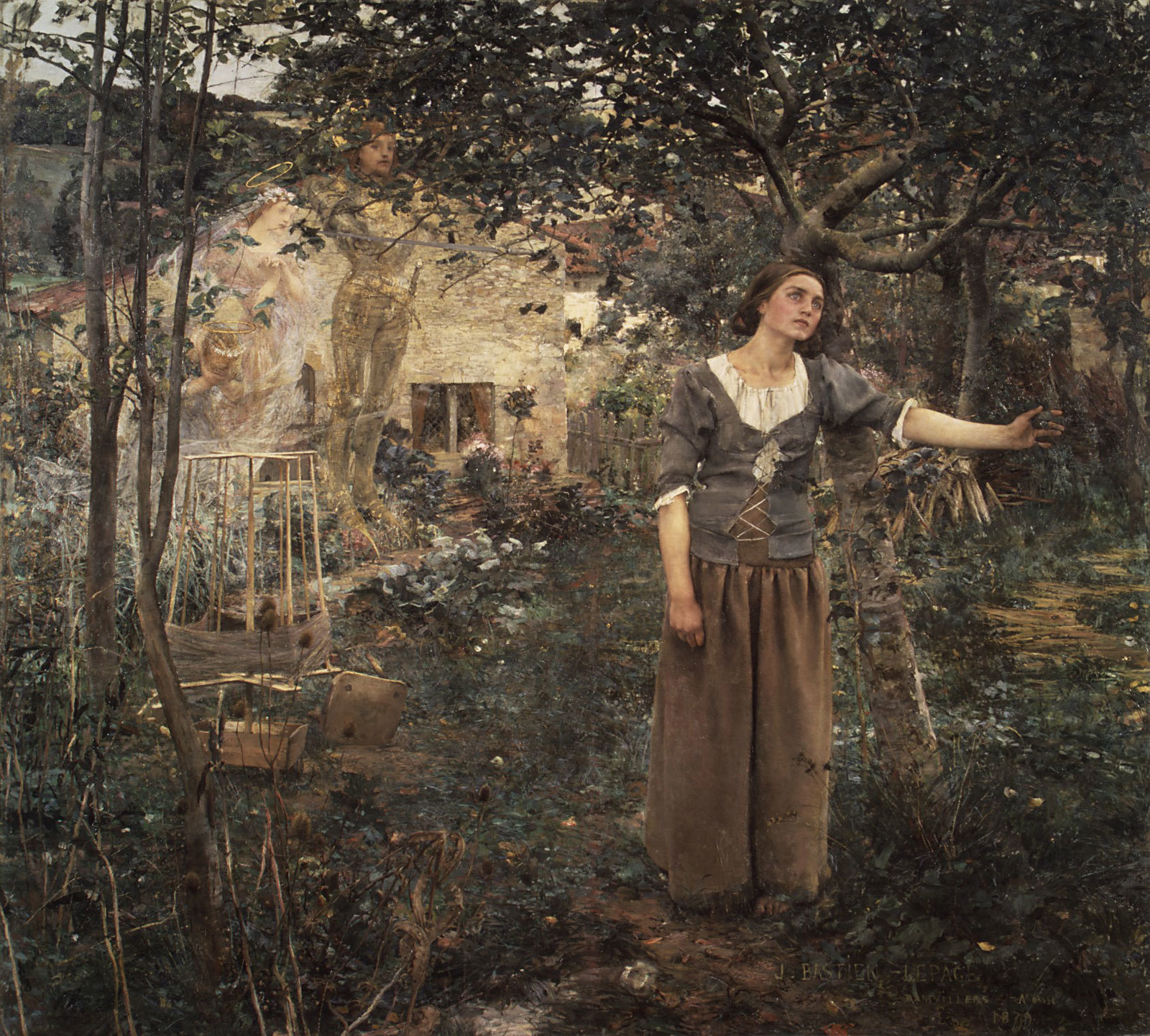
She was, she said, in regular communion with Saint Catherine, Saint Margaret, and Saint Michael, that they visited her regularly and had told her she had been chosen by God to free her country from the foreign invader and to take up arms for the salvation of France. She would they said, see the French Dauphin crowned King Charles VII at Reims.
When she was just sixteen, she persuaded a relative to petition the local garrison commander Robert de Baudricourt on her behalf for permission to travel to the Royal Court at Chinon to inform the Dauphin that she’d had visions telling her that he would one day be King of all France.
Baudricourt was dismissive of her claims and declined her request, but Joan remained undeterred and returned a few months later to petition him again. This time he seems to have been more impressed for Joan had made a series of predictions with regards to the on-going siege at Orleans that had come true and so this time he granted her request.
It is difficult to understand Joan’s motivation and her determination to fulfil her perceived destiny unless we to believe she had these visions. She certainly did, and even under great duress and in fear for her own life she remained steadfast in this belief.
By the time she arrived at the French Court on 2 March 1429, with her hair cropped short and dressed as a boy she had already let it be known that she had vowed to remain a virgin and wished to be referred to as La Pucelle, or the the Maiden. Her vow of chastity would certainly prevent her from being pursued or promised to another while the likelihood is she dressed as a boy out of a fear of being raped.
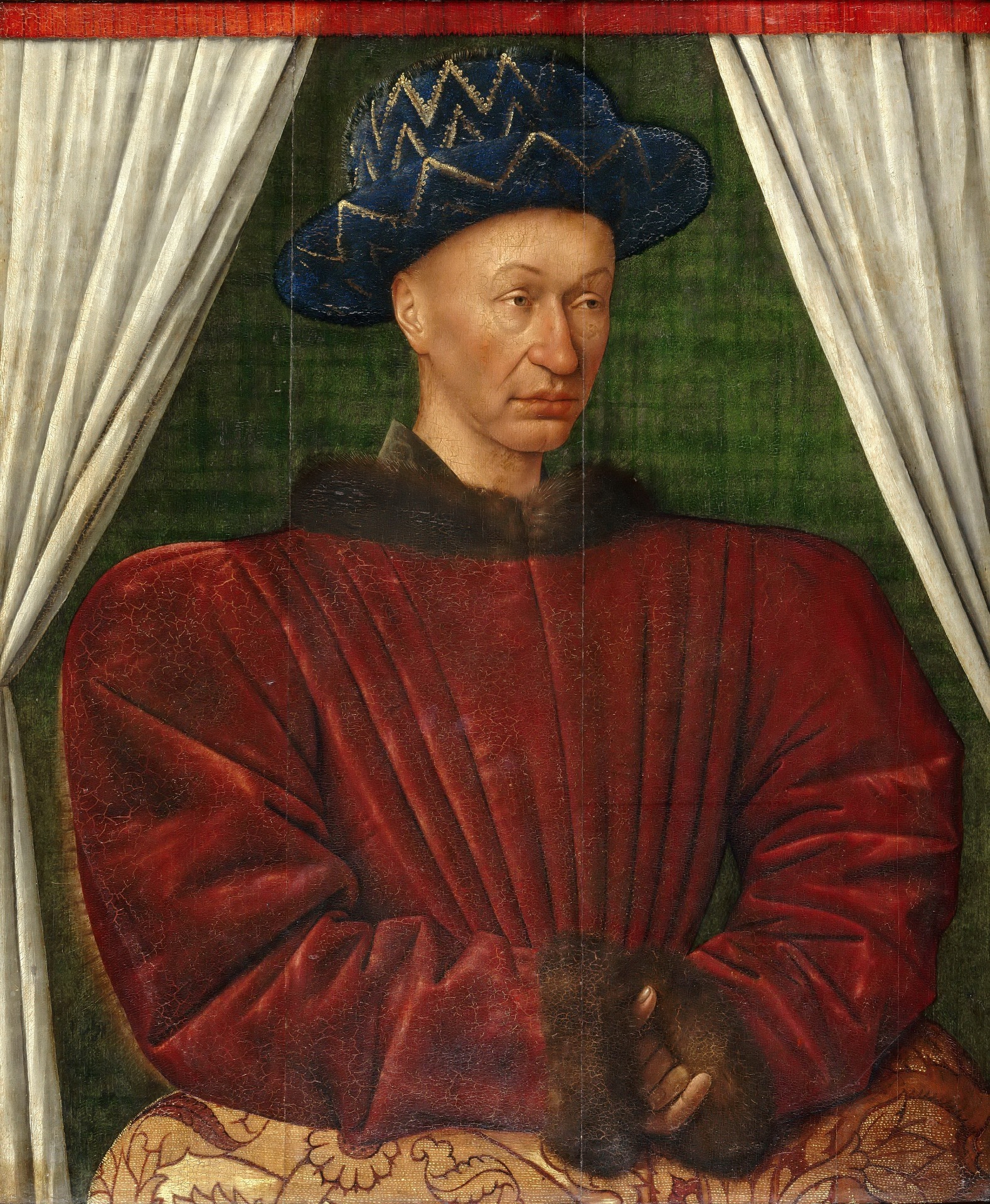
She presented herself before the Dauphin with great humility displaying all the simplicity of the impoverished little shepherd girl and said to him: “Most illustrious Lord Dauphin, I have come and am sent in the name of God to bring aid to yourself and to your Kingdom.”
Following a private conversation with this strange little peasant girl dressed as a boy the Dauphin seemed impressed. Even so he ordered her to go to Poitiers to be examined by a group of theologians. After three weeks of intense questioning, they eventually declared her to be sane, honest and theologically sound.
Jeanne d’Arc had arrived to save her country from its tormentors but exactly what possessed the French Court to believe her claims to be in direct communication with God remains a mystery and perhaps only a regime on its knees and at the end of its tether would have done so.
France was in a political and administrative mess divided as it was by factional in-fighting and governed by political assassination. It had endured decades of humiliation at the hands of the English and their Burgundian allies and on the occasions when it had rallied to confront its enemies had been routed on the battlefield as at Agincourt in 1415. Its nobility was corrupt, its military discredited, and its civil authority was in disarray. By July 1420, it had all but effectively given up.
At the Treaty of Troyes, the Succession to the French Crown was ceded to the English King Henry V. Alas for Henry he died two years later a mere two months before the French King Charles VI and so the Crown passed to his infant son, also Henry, to be the nominal ruler of both Kingdoms.
Over the next few years, things hardly improved for the French and by 1429 much of the country was under foreign control. Paris was occupied by the English and Reims, where the French Kings were traditionally crowned by her ally the Burgundians.
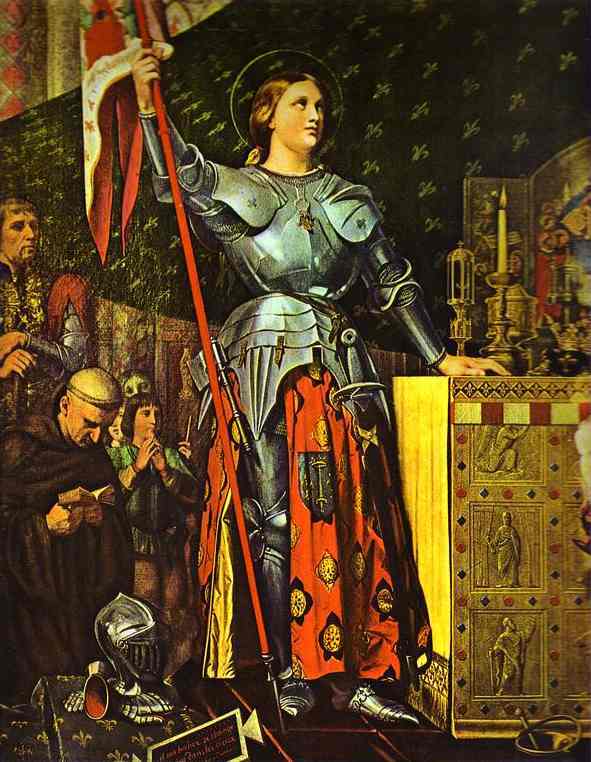
The only major town in northern France that was not occupied and remained loyal to the French Crown was Orleans and even this was under siege. So, it would appear that desperate times required desperate measures, and nothing could be more desperate than to hand the fate of the nation over to an unknown, uneducated seventeen year old girl.
The theologians had informed the Dauphin Charles that a “favourable presumption could be made on the divine nature of her mission,” but that this did not serve as definitive proof. She had to be put to the test and this test would be the raising of the siege at Orleans where others had failed.
Informed that she was to accompany the army to Orleans she had a white suit of armour made and took it upon herself to have a letter penned to the English that read, “Go back to England, or I shall drive you out of France,” hardly surprisingly they chose not to respond.
As a woman Joan could have no formal command within the army but she remained determined to lead it in person. She meddled in military affairs from the outset so much so that the French Commanders tried to exclude her from their War Councils, but she would have none of it. She had her royal remit, and she would be heard.
Clearly Joan had no military experience, but she had not been worn down and disillusioned by years of failure. She was supremely confident and mingled with the troops exhorting them to ever greater endeavour. They were impressed with this girl who seemed to know no fear and were soon looking to her for leadership - she had very quickly become more than a mere standard bearer but a woman of substance.
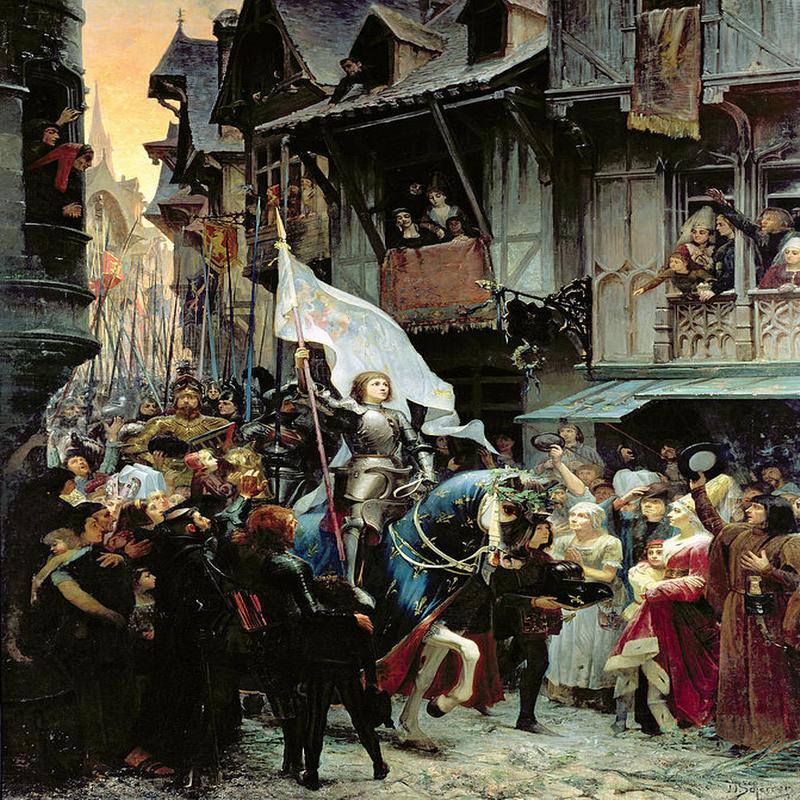
Joan who had arrived at Orleans on 29 April 1429 had reinvigorated the army. The French Commanders after so many years of defeat had erred on the side of caution but she brushed aside their fears and initiated attacks often leading them herself and after a number of minor victories was determined to lead a major assault upon the English stronghold at Les Tourelles. If Les Tourelles fell so did Orleans.
The French Commanders once more counselled caution and suggested they should wait for reinforcements, but Joan was not listening and on 7 May she led the attack herself receiving an arrow wound to the neck. Carried from the field it seemed as if the attack would falter but Joan returned to lead the final assault. It was a resounding success and with the fall of Les Tourelles, Orleans was relieved. Joan had been vindicated.
Following her triumph at Orleans, she persuaded Charles to grant her joint command of the army along with the Duc d’Alencon. She was determined to advance upon Reims so that her dream of seeing Charles formally crowned King of France could indeed take place. This was a bold strategy for Reims was deep in enemy territory. Nevertheless, she would attack, and this time there was little resistance to her plans. People now believed her.
At the Siege of Jargeau, while on a scaling ladder she received a glancing blow to the head from a cannonball which left her bruised but otherwise unhurt. It was seen as a miracle and clear to everyone that La Pucelle was protected by God.
She then went on to rout an English army led by Sir John Fastlof (the inspiration for Shakespeare’s Falstaff) at the Battle of Patay and those towns in her path of advance now began to surrender often without resistance. At each one Joan made the town’s dignitaries pledge their allegiance to the French Crown - Auxerre fell, Troyes fell, what had begun as a military campaign was turning into a procession.
On 16 July, Reims opened its gates to Joan and her army without a fight and Charles who was following close in the army’s wake was crowned King Charles VII of France the next day. Joan had achieved what she said she would, and her reward was to be ennobled. She believed however, that she had been ordained by God to rid France totally of the foreign invader and so for her there was still much work to be done. Others did not agree and begged her to remain out of danger.
In September she led the army in an attack upon Paris during which she was hit in the leg by a bolt from a crossbow and was forced to withdraw from the siege and take to her bed; for a woman who supposedly acted by Divine appointment her failure to take Paris was a serious misstep and it was the first indication perhaps, that God had abandoned her. Her temporary absence from the conflict also provided the opportunity for the politicians to intervene and they ordered the army to withdraw so that negotiations could begin.
Joan was no politician and did not seek power or influence for herself she simply wanted to fight but where there are deals to be struck and money to be made others would seek to do so. Her simplicity made her vulnerable. She would continue the struggle while others with agendas of their own would seek to undermine.

On 23 May 1430 she became embroiled in a skirmish with Burgundian troops and taken by surprise ordered a hasty retreat but as her new noble status now demanded she insisted on being the last to leave the field. Having remained too long she was quickly overpowered and taken prisoner. It was customary at the time for a captive of noble rank to be ransomed but Joan’s family did not have the means to do so and no French noble, including Charles himself, came forward to pay the money demanded for her release. The English however would pay and with Joan having made several attempts to escape the Burgandians frightened of losing their most prized possession sold her for 10,000 gold francs.
The English were determined to punish this woman who had so humiliated them. As such she would not be treated as a prisoner-of-war but instead be tried for heresy. The evidence for doing so was flimsy to say the least but the English were not going to be thwarted in their ambition to burn the witch by technical legalese. This was to be a politically motivated trial and they would have their way with her regardless of any evidence produced to the contrary.
According to the law, Joan should have been confined in a female ecclesiastical prison where she would have been guarded by Nuns instead the English held her in a secular male prison.
At the trial which began on 9 January 1431 in Rouen, Joan was denied any legal counsel and made to sign documents that being illiterate she could not read. Even so, it was at her trial that her enemies first encountered her great intellect and if the English had thought they were trying a simple peasant girl who could be easily intimidated they were seriously mistaken.
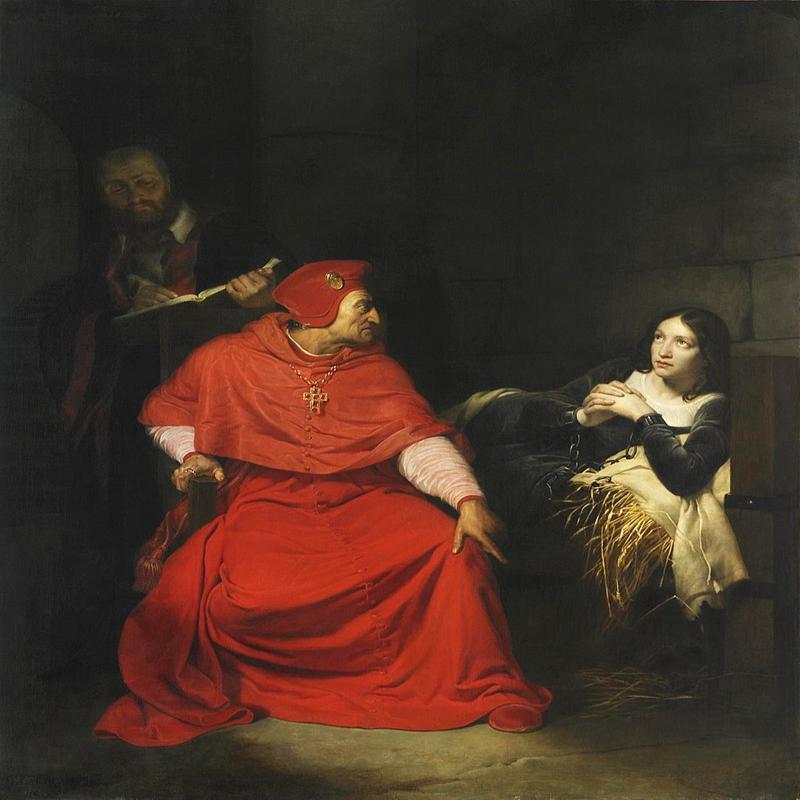
One of the most memorable exchanges at her trial came when she was asked if she thought she was in God’s Grace. It was a loaded question for Church Doctrine held that no one could be certain of being in God’s Grace. If she answered yes to this question, then she would have been guilty of heresy. If she answered no, then she must have been lying about her visions. But she answered neither yes nor no. Instead, she said in a clear and confident voice: “If I am not, then may God put me there, and if I am, may God keep me so.”
The subtlety of her response astonished those present. Indeed, the Notary at the trial, Boisguillaume, later testified that “Those interrogating her were stunned into silence.” This was not the person they were expecting, and so well did she defend herself throughout the trial that the Court transcripts later had to be doctored to cast her in a bad light.
At the time for a woman to dress as a man and adopt masculine mannerisms was considered heretical. However, for the crime of heresy to warrant the death penalty it had to be a repeat offence. To placate the Court, Joan agreed to adopt female dress for the duration of its proceedings. Not long after agreeing to do so she was violently sexually assaulted in prison and reverted to dressing as a man once more to avoid further such attacks. Others later suggested that she had her only dress stolen and had been given little choice but to do so.
On 24 May, she agreed to abjure, signing a document she could not read for herself, and which denied the validity of her visions and of the voices she had heard. But the document she signed it was later claimed was not the one that appears in the Court transcripts. In any case, she had only signed it on the promise that by doing so she would be moved to a female prison.
The promise came to nothing and for the next three days she remained under the constant threat of rape and for the sake of her own safety she again began to adopt the mannerisms of a man but by doing so the Court could now show that she had relapsed and again committed heresy. Despite her startling performance in the Courtroom and the concocted nature of the evidence against her the verdict was never in doubt with many of her interrogators including the Chief Inquisitor Jean Le Maitre had been intimidated into taking part by the English and the verdict they passed was on pain of their own death.
On 30 May, Joan of Arc was found guilty of heresy, not for reasons of witchcraft as the English had hoped but for having dressed as a man. She was sentenced to death by fire.
There was to be no attempt to rescue her or even any significant protest from the French Government.
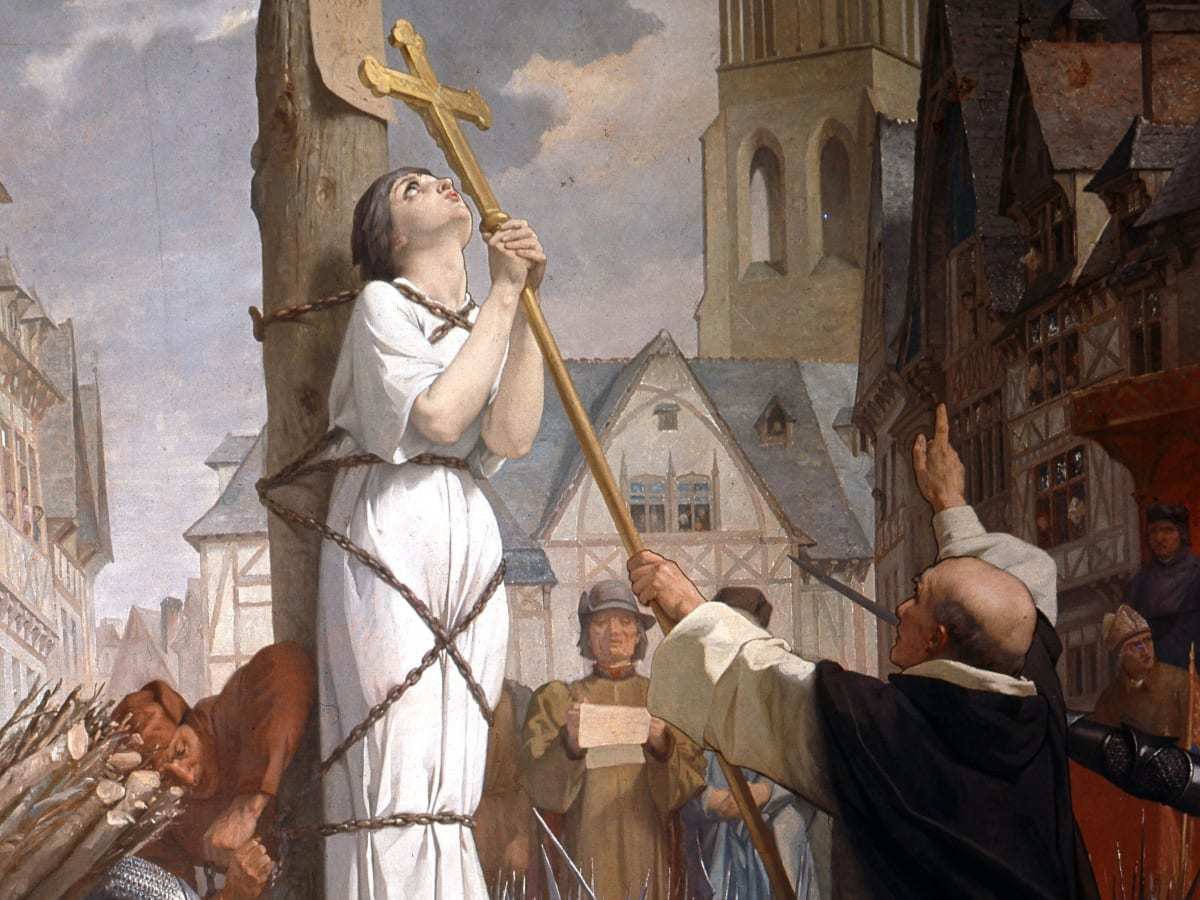
The same day the sentence was passed, Jeanne d’Arc was tied to a post in the centre of Rouen as a large crowd looked on. She appeared calm and before the fires were lit requested that a priest stand before her holding a crucifix so she could look upon it as the flames engulfed her. She had earlier told her captors that: “I am not afraid I was born to do this.”
Now as she burned to death no one reported hearing her scream or cry out. All they could hear was her quietly repeating to herself Jesus! Jesus!
Following her execution, the English exposed her remains for everyone to see. They then burned her body twice more until nothing remained but ashes which were later disposed of in the River Seine.
Though the war between England and France was to continue intermittently for a further 22 years after Joan’s execution, France had once again become a nation. Its destiny secured by a simple girl not born to rule but who had the courage and belief to make her dreams become a reality.
Pope Callixtus III later ordered that a posthumous retrial be held, and on 7 July 1456, she was cleared of all charges. On 16 May 1920 she was canonised by the Catholic Church as Saint Joan of Arc.
Tagged as: Ancient & Medieval, Women
Share this post:





